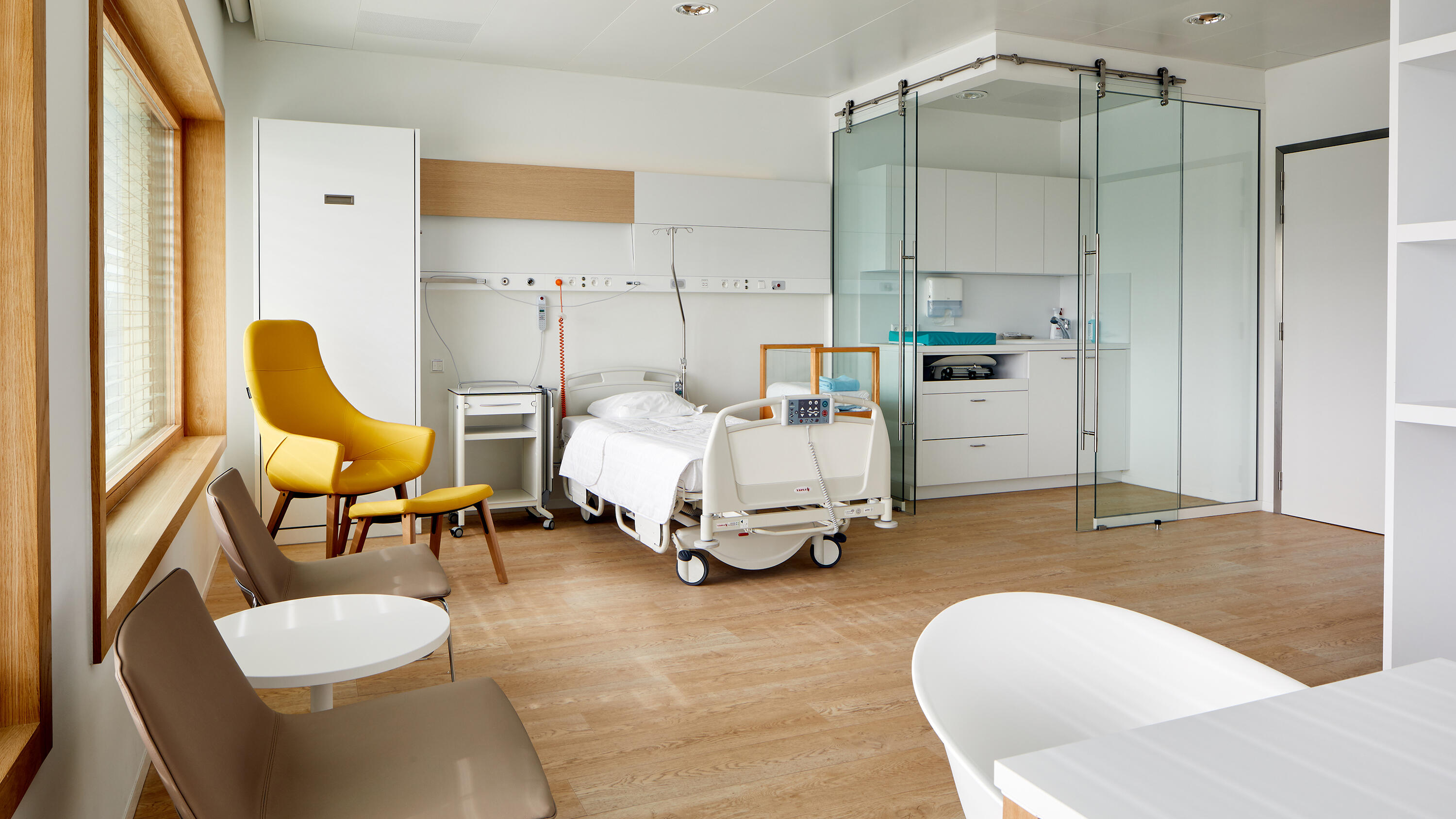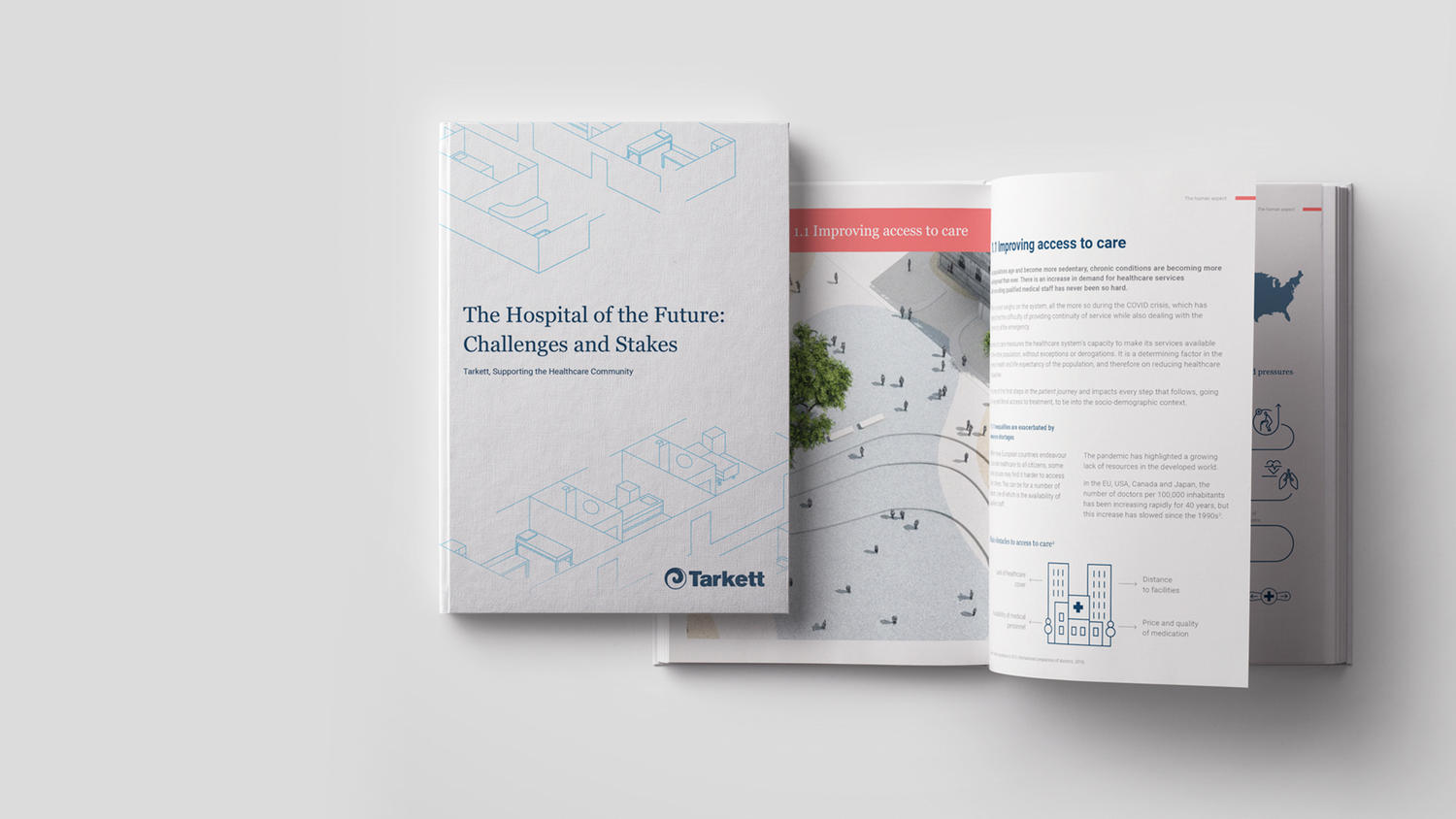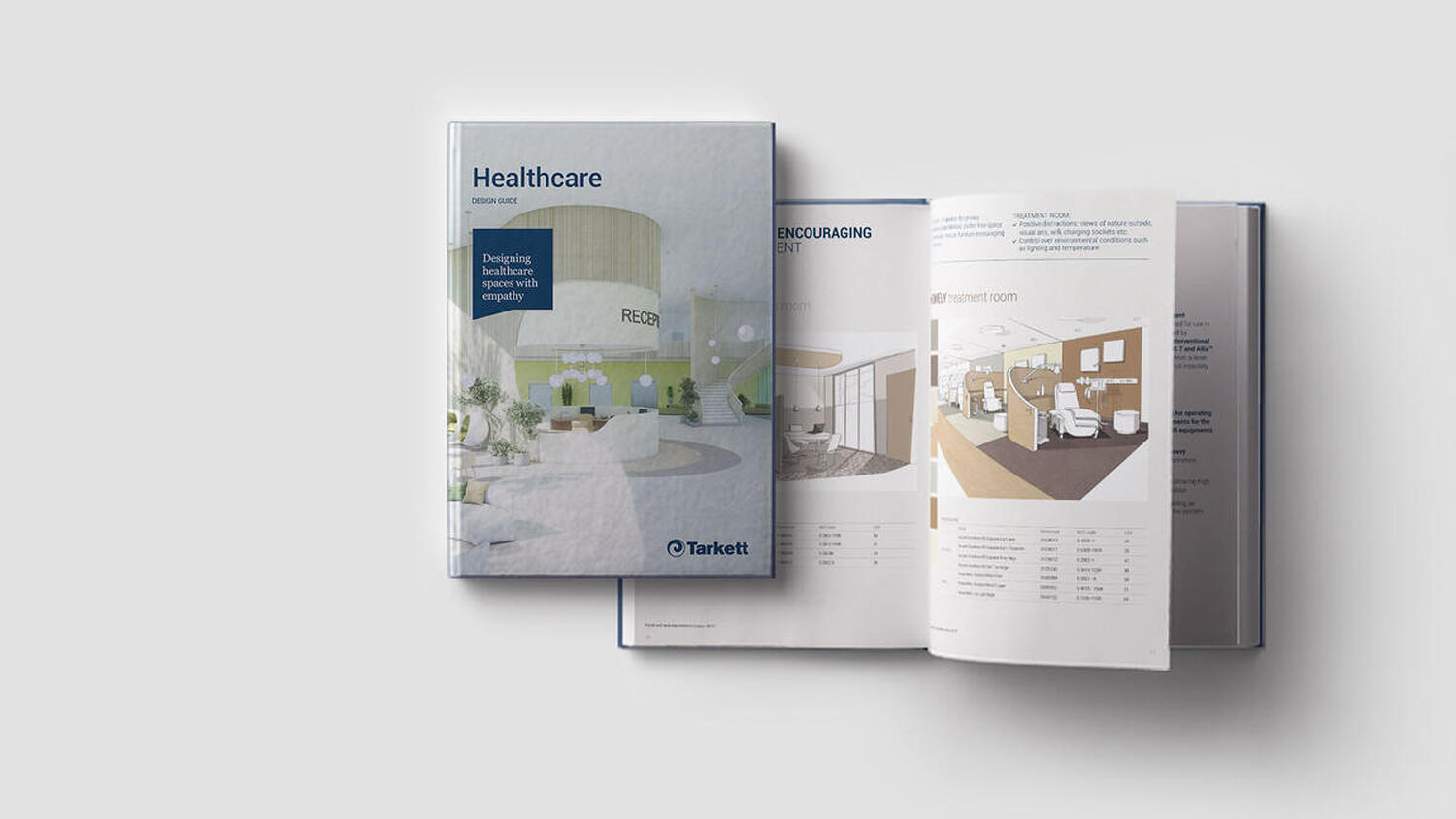
Sustainable Flooring for Hospital
Sustainability and eco-responsibility have become a requirement when designing a hospital. The subject is both fascinating and complex. Hospitals are already subject to many technical and regulatory constraints, as well as social and economic stakes. Meanwhile environmental concerns require us to go still further, identifying new levers to reduce the carbon footprint of the buildings.
CO2 emissions
Floor finishes account for less than 10% of the embodied carbon emissions* of a Healthcare building, currently estimated at 1000 kg eq. CO2/m2 across its whole life cycle**.
Still, we all have to do our part to reach carbon neutrality. For several years, Tarkett has been involved with this subject, which we feel particularly strongly about. We have adopted a virtuous circle approach all throughout the life cycle of our products.
To help you make sense of it all, and make the right decisions, we have summarised here the criteria that will best help you reduce your buildings’ carbon footprint when choosing your flooring solutions.
* Embodied carbon is the total volume of CO2 emissions related to the life cycle of a building's construction materials.
** Source AECOM-Acute hospital benchmark studies
Crucial factors when choosing low-carbon flooring
These five crucial factors should guide your choice of materials in order to reduce a building’s overall carbon footprint.
- Manufacturing: reduce carbon footprint during production
- Product durability: avoid unnecessary replacements
- Maintenance: can account for up to 80% of a floor’s carbon footprint
- End-of life recycling: 1m² of homogeneous iQ vinyl floor = 11,8kg CO² eq
- Manufacturer’s policy: long term commitment, transparency and promotion of circular economy
1. Eco-Design & Manufacturing
1. Promote C2C Principles
Putting eco-design at the heart of your healthcare project.
Cradle to Cradle® principles imply keeping all materials in use for as long as possible and transforming them into new ones when products reach end of use. Since 2011, Tarkett has applied Cradle to Cradle® principles when designing flooring and wall solutions.
How do we do it?
Good materials
Products are designed from the outset with healthier materials that can be recovered, recycled, and transformed into new products. This commitment to good materials also drives us to eliminate any controversial substance, such as phthalates from our products. We have also removed biocides, to reduce risks linked to increasing bacterial resistance. We offer ultra low VOC solutions.
2. Favour Low-Carbon Manufacturing
At our level, we are fighting climate change by striving to reduce our greenhouse gas emissions. Our main strategies are:
- Optimizing our energy consumption and developing the use of renewable energy. We also strive to preserve natural resources wherever possible and have implemented closed-circuit water reuse system, in many of our plants.
- Increasing the recycled content of our products. We aim to reach 30% of recycled content by 2030 for all our products, because recycled materials are less energy intensive than extraction and transformation of virgin materials.
- Sourcing renewable, low carbon raw materials. That’s why our next generation bio-attributed vinyl uses feedstock derived from renewable biomass instead of fossil resources.
iQ Natural : One of the lowest Carbon Footprint on the Market
The innovative, first-of-its-kind formulation of our iQ Natural range addresses these challenges. It has one of the lowest carbon footprints of any resilient flooring solution on the market, ... iQ Natural is designed to last for decades, to meet healthcare sustainability and performance requirements.
2. Durability
A so-called 'green' product that needs to be replaced every 5 years instead of every 20 years, is not all that green in the long term. If it has to be changed frequently, in the end everyone loses out, including the planet
Elizabeth - Hospital Engineer
1. A sustainable solution is a solution that lasts over time, a flooring or wall with life-long performance
When making a purchase decision, we often focus on initial purchasing alone, but there are many other factors to consider, such as product durability and life span, cleanability and maintenance requirements, repairability. These are essential considerations in a healthcare environment, where guaranteed performance over time is crucial. They are also crucial to reducing carbon footprint in healthcare environments as unnecessary replacements mean avoidable carbon emissions, for example.
2. Long-lasting also means repairable
Repairs extend the lifespan of a product, optimise your initial investment and avoid unnecessary carbon emitting replacements. To repair rather than to replace also reduces CO2 emissions by limiting the production of more coverings.
Some vinyl floorings, such as our iQ ranges, allow for surface restoration and repairs if damage occurs.
iQ: Outstanding Performance and Low Maintenance
Our iQ homogeneous floors have it all, with one of the lowest carbon footprint on the market. Smooth and easy to clean flooring, it meets the highest standards of cleanliness. It is made to last for decades, and requires very little maintenance during its lifespan, meaning a low total cost of ownership. The compatible dry-buffing technique also restores the surface through burnishing alone. This technique extends the lifespan of floor coverings considerably. Compared to a standard vinyl, our iQ range offers a 45% to 50% reduction in CO2 emissions per m2 over 60 years of use.
3. Maintenance
Proper maintenance of surfaces is vital in a hospital environment. This fact is all the more present in everyone's mind since the COVID-19 health crisis, which has really highlighted the importance of rigorous cleaning protocols in preventing the spread of germs.
Ease of maintenance can also have a significant ecological impact over a product's lifespan. Straightforward maintenance is therefore a key lever for sustainability. To reduce maintenance-related environmental impact, materials must be:
‧ Highly cleanable, without requiring specific cleaning protocols of their own, thus reducing the use of detergents
‧ Resistant to chemicals, and to the repeated use of disinfectants and hand sanitizers
‧ Bacteriostatic without biocide
4. End of Life Recycling
Selecting a flooring should also mean planning for its end-of-life
Is the product reusable? Recyclable? Will it make building-site waste management any simpler? Tarkett can help you here.1. Prioritize End of life recycling
Recycling used materials is one of the most efficient ways to combat global warming. Tarkett facilitates the recycling of its floorings at every stage of their life cycle, with a waste-collection scheme to recover off-cuts after installation and post-use flooring. We handle the recycling ourselves, to ensure these discarded materials become high quality raw materials once again.
2. Join ReStart®, our take-back and recycling programme
To help healthcare facilities to institute a circular economy and reduce their carbon footprint, we offer closed-loop recycling for post-use glued homogeneous vinyl flooring, such as our iQ range to turn them into new products. We are the first manufacturer to offer this service, a real challenge made possible by an innovative separation and recycling technique developed by Tarkett.
Our ReStart® Programme invites all our customers to get involved and join us in closing the loop on flooring to lower their impact and reduce waste and reach green building certifications.
5. Transparency
At Tarkett, when we say we’re committed to offering our customers the highest quality materials that contribute to a healthier and better environment, we mean it. And to us, it means proving it, using scientific methods and then sharing extensive details. We do this with complete transparency, while constantly striving to improve on past results.
1. Insist on total transparency
This philosophy has led us to produce highly detailed Environmental Product Declarations (EPD) and Material Health Statements (MHS), both third party assessed.
EPDs are based on analysis of a product’s entire life cycle. They highlight the environmental impact of a product until end-of-life and are an essential part of Tarkett’s sustainable strategy to optimise its environmental footprint.
An MHS is a scientific declaration that assesses any potential health risks associated with the materials used in a product. And yet, Tarkett is the only company in our industry to fill out and distribute MHSs for his products.
Building a new hospital ?
We are here to help you identify and quantify sustainability opportunities in your healthcare project, giving you peace of mind and confidence you’ve made the right choices for both people and the environment. And today we can also help you calculate your project’s carbon footprint.


